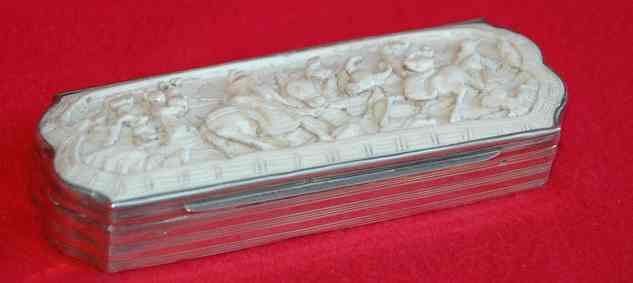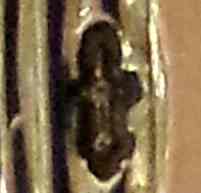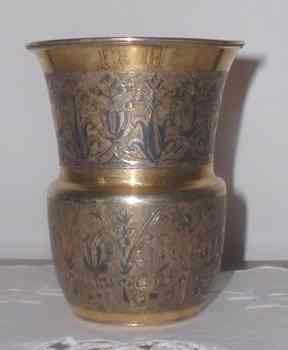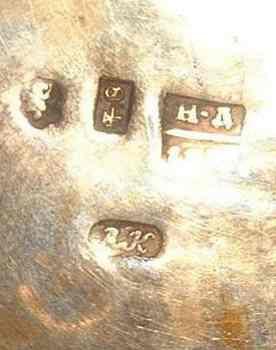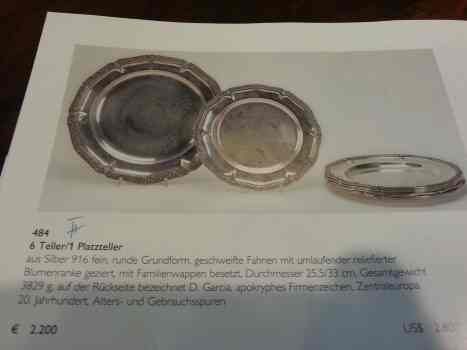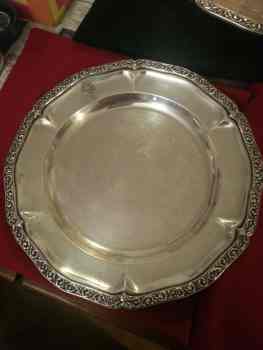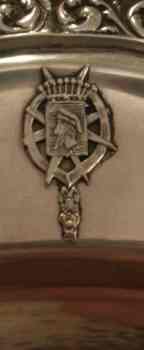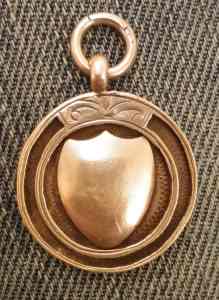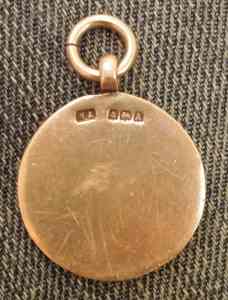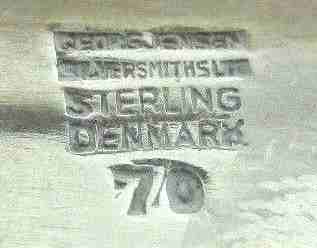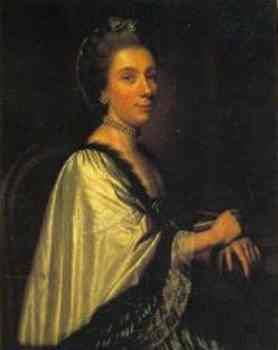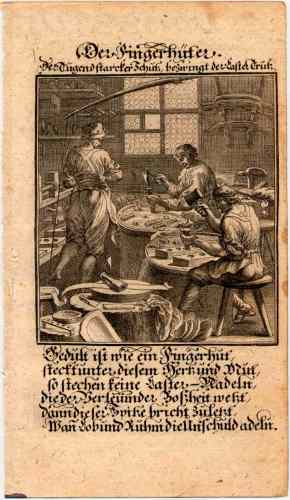
Magdalena and William Isbister present:
16th century silver Nürnberg thimbles

Johann Christoph Weigel was a German copper engraver, art dealer
and publisher. He was born in Bohemia in 1654 and died in
Nürnberg some 70 years later. He was usually known as Christoph
Weigel the Elder. In 1698 he wrote "Abbildung Der
Gemein-Nützlichen Haupt-Stände Von denen Regenten Und ihren So
in Friedens- als Kriegs-Zeiten zugeordneten Bedienten an, biß
auf alle Künstler Und Handwercker" (reference 1). (Illustrations
of common utilitarian occupations of the Regent and his servants
in both peace and in wartime including all the artists and hand
workers). This book was one of his most important works. It was
published in Regensburg and in it he described more than 200
artisans and craft workers whom he had observed personally in
their workshops and other workplaces. Each description was
accompanied by an engraving of the activity.
Weigel described the thimble makers in Nürnberg who were
classified with the other brass workers having been granted
independence from the coppersmiths in 1531. In his section on 'Fingerhuters'
(thimble makers), Weigel wrote:
"There are also double thimbles with the inner part being
completely smooth and gilded, and the outer part which fits
snugly over the inner part is made of silver and worked in
filigree which looks very attractive. They often decorate the
lower edge of the thimble by engraving garlands, foliage,
animals and the like, in which type of work the craftsmen of
Nürnberg remained the leaders because foreigners seldom engage
in it "......
click
here

Welcome to new ASCAS members:
Members' Window # 107
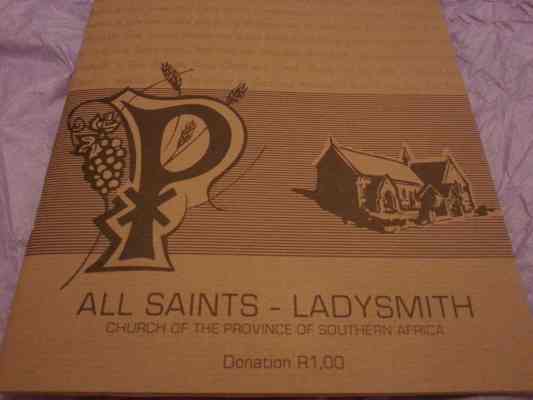
Alan Yates presents:
The trowel unveiled

Some months ago ASCAS published my request of assistance
for a little silver trowel:
...I wonder if you could assist me with a query relating
to the history of Ladysmith?
I recently bought a charming little trowel in silver and
ivory from a very reputable dealer in London (Image
attached).
In my opinion it is a commemorative item but smaller
than the usual commemorative trowels. The flat silver
portion is only 115 mm long.
The inscription reads 'HEB 1882 Ladysmith '.
The Maker's mark is JH in a rectangular box......
click here

|
Yosef Shlingbaum writes:
...May I ask if you can give me information on this Russian Cup
and hallmark? (date, region, maker,)
It is 3.5" Tall & 2.7" Opening
Thanks for your help.
Yosef Shlingbaum.
Alan Yates writes:
...I was able to acquire a set of 12 very good quality Spanish
silver plates 25.5 cm diameter and two serving plates from the
same set size 33 cm diameter. Total weight approx. 7 700 gms.
Images attached.
I know a bit about the maker, D Garcia from Madrid, who worked
during the mid twentieth century, but I would like to know
something about the royal (?) crest in relief on all the plates.
Would any of our members be able to assist?
Alan Yates
Perry Bloss writes:
...Hello, I was hoping you to help me find where a silver
pendant, I was given, comes from. I have attached two images.
Front and back.
Perry Bloss
The maker is William Adams Ltd, Barr Street, Birmingham, the
date letter A stands for 1925, see my website at
http://www.silvercollection.it/ENGLISHSILVERMARKSXW2.html
Giorgio Busetto
I received a reply from a long time Jensen expert about the
Georg Jensen number 70 that I asked the group about recently.
This is his take on the hallmarks:
"As expected its 100% straight. Given that I think I see one
of a pair of gas holes in the piece (they were often made in two
parts, front and back, and soldered all round....the gas holes
prevented the piece from deforming when this was done .... but
it's not something they do these days very much as technology
has moved on) I'm going to take a stab and say not later than
the 1960s....I've seen evidence of the LTD mark in use during
the 50s but not clear when it was stopped, but I am hoping the
factory can tell me more if their records (which are often
chaotic) turn up."
Allen Carlson
Willand Ringborg writes:
Mr Christophe Ginter puts forward a question on Swedish
silver. I happen to know some of this particular matter, due to
access of the relevant literature.
This is my answer:
From left to right, initials for silversmith Johan Petter
Gronvall, master 1807-1843, next town mark for Stockholm (Saint
Erik), assayers stamp ("cat foot" but heraldic three crowns) and
finally year index (B4). He had quite a big production from his
workshop.
Willand Ringborg
Rod Hall writes:
The marks indicate Sweden (the so-called "cats foo" mark,
showing the national emblem of Three Crowns), Stockholm (the
mark representing the head of St. Erik) and the year is indeed
1832 (B4). The maker is Johan Petter Grönvall (IPG), a Master
Silversmith in Stockholm, who achieved this status in 1810. Rod
Hall
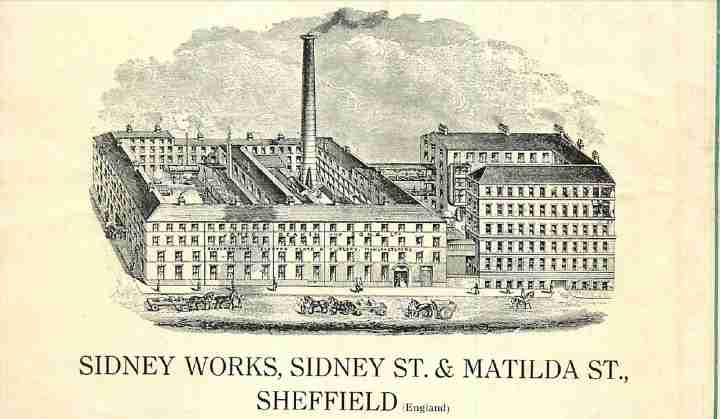
|
This month ASCAS presents an ancient image of the
factory of:
JAMES DEAKIN & SONS LTD
The firm was founded in Sheffield by James
Deakin in 1866.
The first mark was entered by the firm in Sheffield
Assay Office on 31 January 1878. It was a "JD" over
"WD" and, possibly, represented the partnership of
James Deakin and his son William Pitchford Deakin.
The firm was active at Sidney Works, Matilda Street,
Sheffield.
In 1886 two further sons entered in the partnership,
John Deakin and Albert Deakin, and the firm was then
known as James Deakin & Sons.
Further marks were entered in London Assay Office
(1888) by William and John Deakin (subsidiary
offices and showrooms at 48 Holborn Viaduct,
London), Chester and Birmingham. Further offices and
showrooms were opened at Gardiner House, 14
Charterhouse Street, London, 34 St. Enoch Square,
Glasgow and 7 Queen Street, Belfast.
After the retirement of James Deakin (1893) the
business was continued by his sons William, John and
Albert.
In 1897 the firm was converted into a limited
liability company under the style James Deakin &
Sons Ltd.
This image is part of the
FACTORIES, PLANTS, SALESROOMS, SHOPS AND WORKSHOPS:
OLD IMAGES section of www.silvercollection.it
website
|
"A WORD per MONTH"
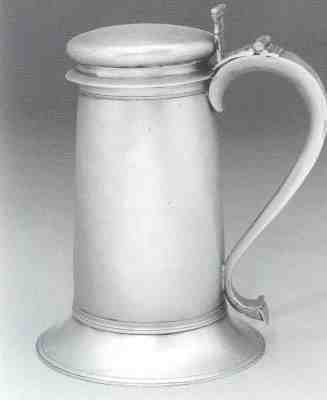
|
FLAGON
The flagon is a tall pouring vessel, so called from
c. 1640, having a single handle, hinged lid with finial
and thumbpiece.
In origin the flagons were an enlargement of the belly
cans illustrated in North European 15th century pictures.
Later they assumed the straight-side form of an enlarged
tankard.
The lid is domed or cushion shaped and the body is
cylindrical, barrel or drum shaped.
They may be plain, gilt, engraved, or chased in low
relief....
more
|
"A SILVERSMITH per MONTH"
|
|
AUGUSTIN COURTAULD AND HIS FAMILY
PETER COURTAULD - SAMUEL COURTAULD - LOUISA
COURTAULD
LOUISA COURTAULD & GEORGE COWES
LOUISA COURTAULD & SAMUEL COURTAULD
Augustin Courtauld (senior)
was born in 1655 and baptized in the Protestant church
at Marennes (France).
In 1677 Augustin (sr.) married Julie Giraud who bore him
four children, only one of them (Augustin jr) survived
infancy. After the death of his wife, Augustin sr., in
order to escape the religious persecution against the
Huguenots, sailed from France in c.1686 to start a new
life in England.
In c. 1688 he married Esther Poitier (another French
refugee) having a son in 1689 (Peter Courtauld).
In 1696 Augustin sr. took out papers of denization as an
English citizen and in 1697 his young son Augustin
joined the father and his new family in England.
Augustin jr. (or Augustine) was apprenticed in 1701 to
Simon Pantin, a prominent Huguenot goldsmith active in
St. Martin's Lane at the sign of the 'Peacock',
obtaining his freedom in 1708.
In 1709 Augustin jr. married Anne Bardin, having eight
children, of whom five survived their parents. Among
them, Anne married a goldsmith John Jacob in 1738 and
Samuel (1720-1765), the elder of them, destined as his
father for a career as a silversmith......
more
|
"A CREST per MONTH"
DURHAM
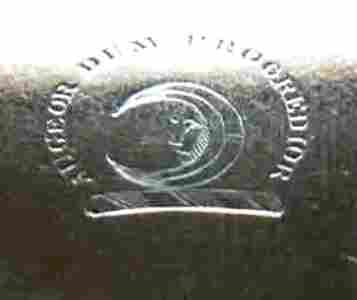
|
A Scottish family.
The crest is described as "an increscent".
The Latin motto is 'Augeor dum progredior' (I increase
as I proceed).
The crest was found on silver ladle hallmarked Edinburgh
1817, maker Andrew Wilkie
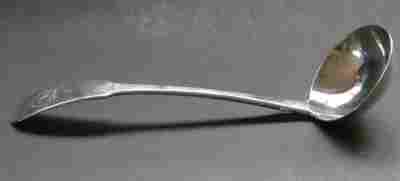

|
Closing our MARCH 2015 edition of ASCAS Newsletter I hope
you have appreciated its content.
Your comments, suggestions and advice will be of great help.
My thanks to Perry Bloss, Riccardo Bonardi, Allen Carlson, Rod
Hall, Magdalena and William Isbister, Willand Ringborg, Yosef
Shlingbaum and Alan Yates for their precious contributions.
Giorgio Busetto
Secretary
DISCLAIMER AND PRIVACY POLICY
ASCAS is a community of people having a common
interest in antique silver.
It is a non-profit association without commercial links.
Membership is open to whomever has a true interest in
this subject matter.
ASCAS has no real property and no fees are requested nor
accepted from members.
ASCAS keeps in touch with its members only through
periodical newsletters, e-mails and web-site updating
and ignores and is not responsible for any other
activity pursued by its members.
Likewise, ASCAS is not responsible for opinions,
evaluation and images displayed, and in any form
published or supplied for publication, by its members
who, in any case, maintain the property of their works
and assure the respect of national and international
legislation about Intellectual Property.
ASCAS does not have the full addresses of its members (only
town, country and e-mail address are requested for
membership).
ASCAS handles and protects with care its members' e-mail
addresses, will not disclose the addresses to third
parties, will use this information only to reply to
requests received from members and for communications
strictly related to its activity.
These rules are expressly accepted by submitting the
membership request.
|
|
 newsletter
# 130 March 2015
newsletter
# 130 March 2015










